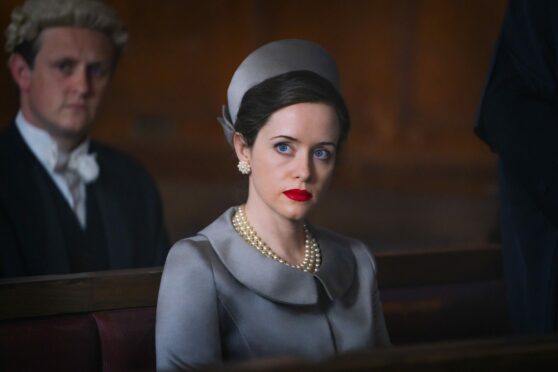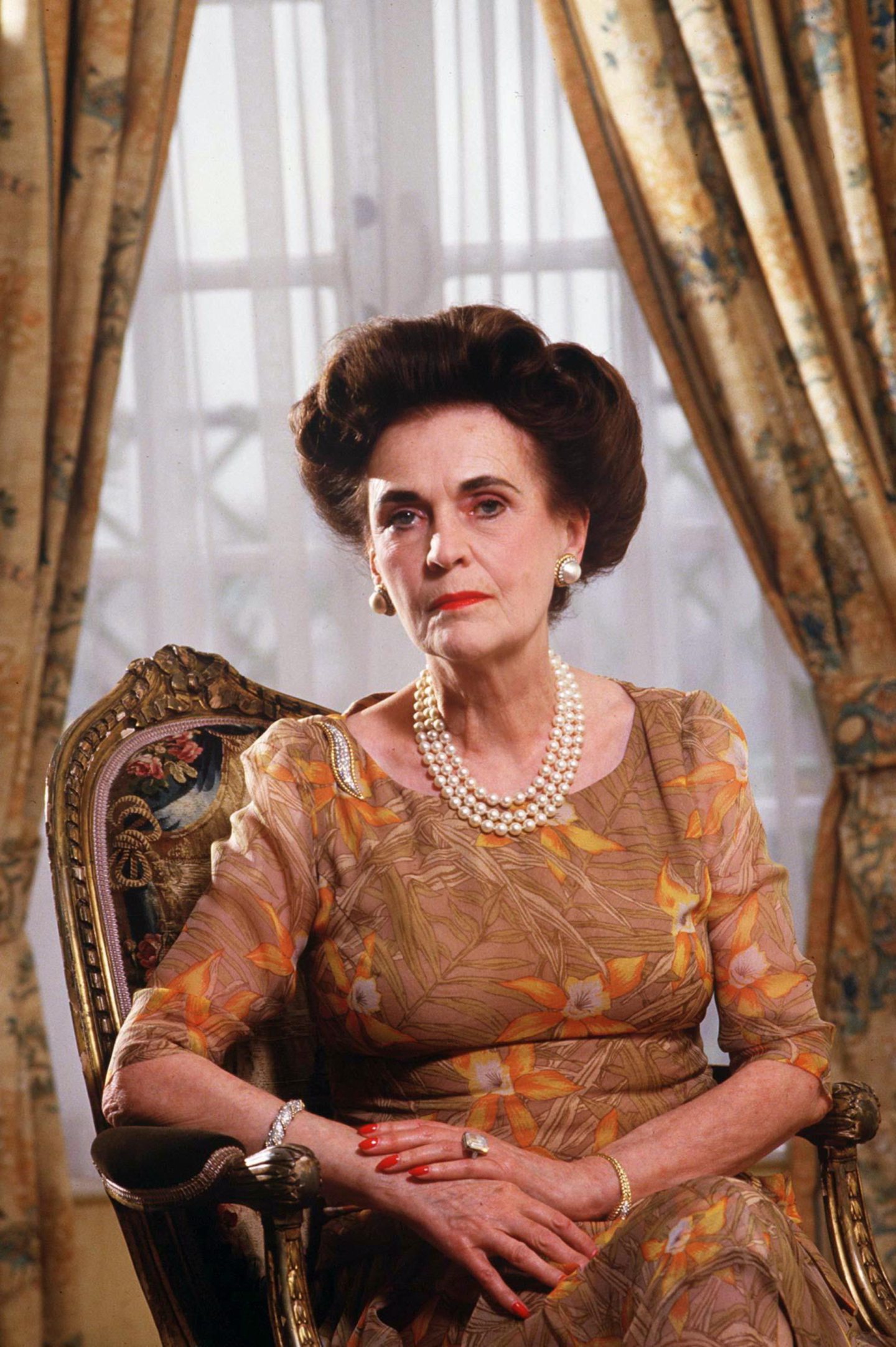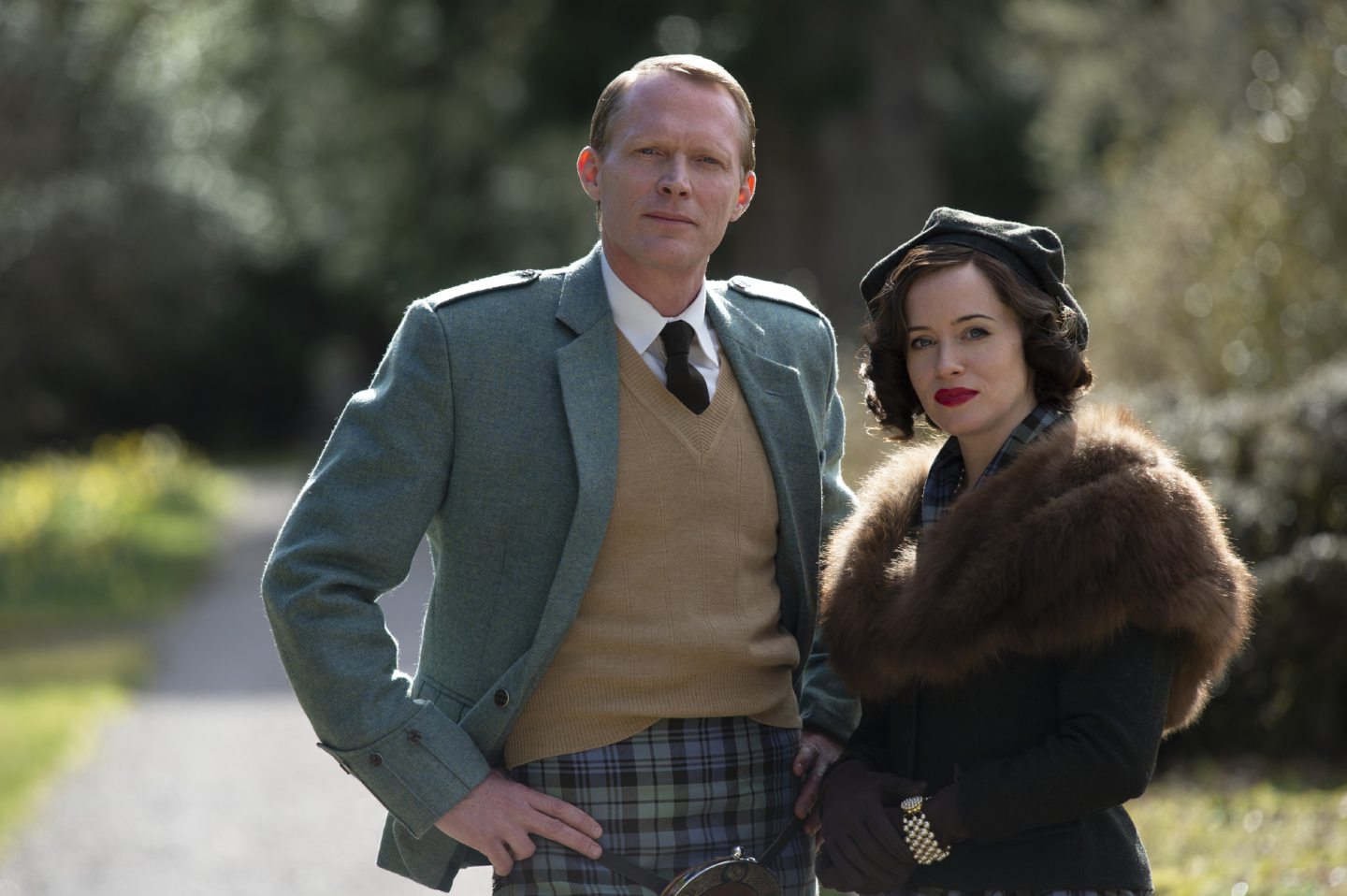
It was, as one might expect of a written judgment from such an eminent judge, arcane and legalistic. It was also completely, utterly, brutal.
Margaret Campbell, Duchess of Argyll, was, according to Lord Wheatley, “wholly immoral, completely promiscuous”. His words, withering, explosive and freighted with the full majesty of the law, were delivered in 1963 at the conclusion of a divorce hearing which scandalised the aristocracy and enthralled everyone else.
Lurid details of Campbell’s private life were examined in court as part of a case brought by her husband, the Duke of Argyll.
As well as her private diary, Polaroid pictures – one in particular, featuring the duchess, a pearl necklace and a mystery man – were produced to back his accusations of her infidelity.
Her reputation as a selfish, adulterous gold digger who had exploited the Duke was seemingly set in stone by the judge’s verdict but, the years have been kinder to the Duchess than a most judgmental judge and a former husband, who had ensured she would also receive a damning verdict in the court of public opinion.
The divorce is now being dramatised in a BBC series A Very British Scandal, with The Crown star Claire Foy playing Campbell, in a three-parter expected to be one of the must-see shows this Christmas.
And Campbell’s biographer says if the drama restores some of her reputation it will be long overdue. Lyndsy Spence, author of The Grit In The Pearl, says the notorious nickname inspired by the court case deserves only the dustbin of history.
“Even the name ‘Dirty Duchess’, I don’t like. I understand papers called her that, but it seems unfair. She was so much more than that.
“I found Margaret quite childlike and I don’t mean that in a bad way. She said she was quite naive and called herself Dumb Bunny and was a very trusting person.
“Margaret loved children and she loved animals; when you examine her life you find a simple woman who was prone to both creating chaos, and stumbling into chaos.
“It was her naivete which led her into this trap with the Duke.”
Born in Newton Mearns in 1912, the daughter of a millionaire chemicals magnate, Margaret Whigham was a debutante privately educated in New York City.
In 1928, aged 15, she fell pregnant by actor David Niven, who was then 18, during a family holiday to the Isle of Wight; her furious father paid for a secret termination.
Numerous romances followed before she was engaged to American amateur golfer and businessman Charles Sweeny; her profile was such that her wedding dress, designed by Norman Hartnell, was said to have brought the traffic in Knightsbridge to a standstill for three hours.
The couple divorced in 1947 and, four years later, she was married to Ian Campbell, the 11th Duke of Argyll.
In their divorce proceedings he portrayed himself as an upstanding member of the aristocracy.
He was in fact, according to Spence, a cad exploiting Margaret for her family fortune to service his crumbling ancestral home of Inveraray Castle, seat of Clan Campbell, as well as crippling gambling debts.
“He had already been divorced twice,” Spence adds. “He was an awful man. He beat his previous wife so badly he broke every bone in her body.”
The Duke was a violent, temperamental alcoholic, according to Sarah Phelps, writer of A Very British Scandal. He preferred to isolate himself at home while Campbell, then in her late 40s, still enjoyed a vibrant social life.
Soon, the marriage was failing and the Duke hired private detectives to gather evidence of his wife’s infidelity.
When she was out of the country he broke into her Mayfair home and stole her diaries and photos; even more disturbingly he returned with his adult daughter as Campbell was asleep.
She tried to call the police but the Duke pinned her down then made off with her diary.
The photographs of Campbell – identified by her trademark three-string pearl necklace – in compromising positions appeared damning.
“The irony is she wasn’t even married to the Duke when she took those photos,” said Spence. “She was in her early 30s and had taken them with her boyfriend at the time.
“When the Duke couldn’t get what he wanted with her diaries and letters, he discovered those photos and he added his own sort of images into the mix. And that’s really how they got her.”
The divorce proceedings lasted five years and scandalised not only the Duchess but also the British establishment. One Polaroid, of Cambpell with a man whose head couldn’t be seen, sparked an investigation by the British Government; it was alleged to be a number of men, including two government ministers and three members of the royal family.
A later investigation found the likely candidate was American actor Douglas Fairbanks Jr, star of The Prisoner Of Zenda.
The proceedings were a humiliation for the Duchess but despite the publicity she refused to vanish.
“To her credit, she showed up,” said Spence.
“Most other people would have been suicidal in the face of such embarrassment and would have gone into hiding. Once she got past all that she showed her face as if to say, ‘I’ve done nothing wrong’.
“For the Duke to do that to her; for her to go away and contemplate what had happened; for her to come back with her head held high at divorce court with a fur coat and big hair as if to say: ‘Look at me’; you have to admire that.”
The Duchess was portrayed as an American gold digger preying on a hapless Scottish nobleman. She would later point out how the press seemed to ignore she was Scottish while he was the son of an Englishman and an American and born in France.
The judge at their divorce proceedings seemed similarly unsympathetic. Her stolen diaries were allowed to be used as evidence.
“These days, the law would have been on Margaret’s side,” said Spence. “But in terms of the press, I’m not so sure.
“In 2014, actresses and female celebrities were involved in a huge leak of private photographs which had been hacked from Apple’s iCloud. Even though the women got justice, and the men responsible were convicted, people were still sneaking online to have a look at the pictures.
“So even if the law is on your side you’ve still been humiliated. You can’t really take back how you feel or how other people see you.
“Unfortunately for Margaret, that followed her the rest of her life.”
Campbell died penniless in a London nursing home 1993 with nothing much more than her sullied reputation and that nickname. Spence believes it’s time for her reputation, though, to finally be rehabilitated.
“She liked nice things, obviously, but harming anybody wasn’t her way. She just liked having a good time. She was childlike in a way but there was a sensitive and kind side to her, too.”
Proving how fictitious the court case was, there was a person named on the divorce petition who was in fact gay. Campbell couldn’t speak up, to say they weren’t sleeping together because he was gay, because she’d have outed him.
“She just kept quiet because it would have been a worse fate for her friend. That was so kind.
“I’m very excited about the series because I’m a huge fan of Claire Foy and I think she’ll do Margaret the justice she deserves.
“You can feel territorial as a biographer but it’s great for Margaret’s legacy and her image to have fans of Claire exposed to this story.”
She did not deserve to be treated like that
Actor, Claire Foy
Margaret Campbell’s divorce may have been a personal humiliation but turning the real-life scandal into TV drama is not a salacious revisiting, according to the woman portraying her.
Claire Foy takes the role of the Duchess Of Argyll in the second series of A Very British Scandal.
“The story can’t do what was done to her the first time around,” Foy said. “If the audience judges her in the same way as before, we have defeated the purpose of what this is trying to do.”
“This moralistic weaponising of women’s sexuality – in either direction – is deeply irritating.
“You’re damned if you’re too frumpy and you’re damned if you’re too sexy. It’s dull, so dull. The conversation hasn’t moved on at all.”
Foy is familiar with portraying real-life aristocracy yet her role as the complicated and morally ambiguous Campbell is distinctly different from The Crown.
“This was a wealthy, privileged woman, pretty spoilt, and pretty questionable as a character,” said Foy. “But, in that period it was difficult to get anyone to speak about their emotions; she created a mask.”
Whether A Very British Scandal achieves its goal of rehabilitating Campbell’s blackened name or not, Foy is unsure.
“I don’t know whether it will,” she said. “But hopefully people will watch it and think that she didn’t deserve to be treated like that.
“That it was misogyny; the patriarchy squashing a woman’s right to be who she is, freely and openly.”
Writer Sarah Phelps’ interest in the Duchess dates back decades.
“Writing the story of Margaret’s life and the events leading up to and including her divorce has been a passion project of mine since 1993 when I first started learning about her,” Phelps said.
“I felt very strongly that she’d been punished for being a woman, for being visible, for refusing to back down, be a good girl and go quietly. This drama is my tribute to her.”

Enjoy the convenience of having The Sunday Post delivered as a digital ePaper straight to your smartphone, tablet or computer.
Subscribe for only £5.49 a month and enjoy all the benefits of the printed paper as a digital replica.
Subscribe
 © Ian Bradshaw/Shutterstock
© Ian Bradshaw/Shutterstock